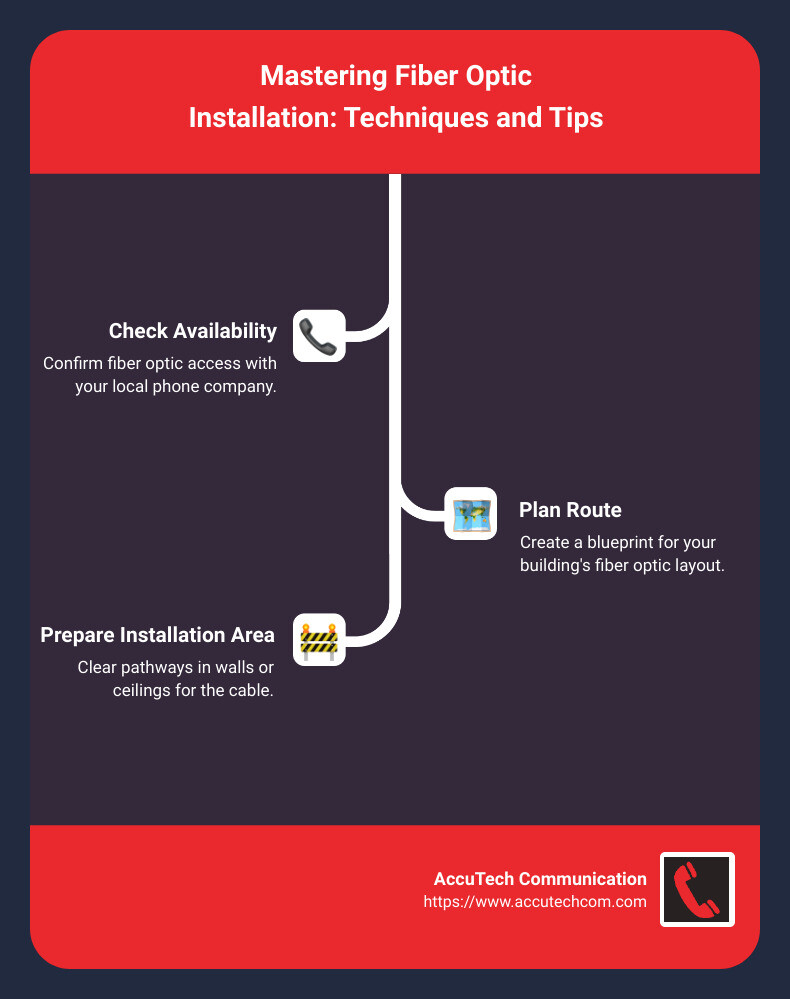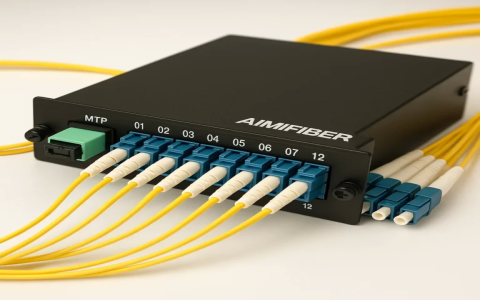# Introduction to Fiber Optic Cable
Fiber optic cable is the backbone of today’s high-speed Internet, business networking, and global communications. Fiber optic technology is known for its extremely fast data transmission, immunity to electromagnetic interference, and the ability to carry signals over long distances without significant loss. If you’re planning to upgrade your network or start a new installation, mastering fiber optic cable is key to getting the best performance and reliability.
In this article, we’ll uncover the secrets of fiber optic cable installation, compare cable types, highlight must-know tips, and offer a practical checklist. Let’s dive in.
# What Is Fiber Optic Cable and Why Does It Matter?
Simply put, a fiber optic cable is made up of thin strands of glass or plastic fibers to transmit data as light signals. Unlike traditional copper wiring, fiber optic cables can deliver internet speeds up to 100 times faster, with less signal loss and better security.
According to the Fiber Broadband Association, as of 2023, over 63 million American homes have access to fiber optic connections, and that number is rising fast (Source: [Fiber Broadband Association, 2023 report]).
Why does this matter for you? Whether you’re running a business, setting up smart devices, or gaming online, fiber optic cable gives you speed, reliability, and future-proof connectivity.
# H2: Types of Fiber Optic Cable: Which Is Right For You?
The first step in any fiber optic cable project is choosing the right cable type. The two main categories are Single-mode and Multimode. Each has unique use cases.
| Feature | Single-mode Fiber | Multimode Fiber |
|---|---|---|
| Core Diameter | ~9 microns | 50/62.5 microns |
| Distance Supported | Up to 40km or more | Up to 2km (typical) |
| Typical Use | Long-haul, WAN, Telecomm | Local LAN, Data Centers |
| Cost | Generally higher | Lower |
If you need to connect buildings across a campus or set up a data center, single-mode fiber is your go-to. However, for office spaces or small business networks where distances are moderate, multimode fiber is often suitable—and more budget-friendly.

# H2: The Real Challenges of Installing Fiber Optic Cable
Getting your fiber optic cable installation right can be tricky. Based on my experience managing both small offices and large industrial projects, here are some common sticking points:
– Bending radius violations: Fiber cables can break or lose performance if bent too tightly.
– Connector cleanliness: Even tiny dust can cause signal loss.
– Cable labeling confusion: Skipping proper labeling leads to time-consuming mistakes later.
Interesting fact: According to Corning Optical Communications, 85% of fiber failures are due to end-face contamination (Source: [Corning, 2022 whitepaper]). That’s why attention to detail during installation is absolutely essential.
# H2: Step-by-Step Guide to Installing Fiber Optic Cable
Ready to get hands-on? Here’s a practical, field-tested guide for installing fiber optic cable:
1. PLAN THE ROUTE: Map out the cable run, avoiding major power lines and high-traffic areas. Mark all entry and exit points clearly.
2. PREPARE YOUR TOOLS: Make sure you have fiber optic stripper, cleaver, fusion splicer, inspection scope, cleaning kit, cable jackets, and safety gear.
3. PULL THE CABLE: Route the cable gently, respecting minimum bend radius (usually 10x the cable outer diameter). Route through conduits or cable trays smoothly; avoid sharp bends.
4. TERMINATE THE ENDS: Strip and cleave the fiber carefully, attach the right connectors (SC, LC, MPO, etc.), and use a fusion or mechanical splice.
5. TEST AND LABEL: Use an optical time-domain reflectometer (OTDR) or power meter to check for signal loss. Clearly label both ends for easy troubleshooting.
Following these steps dramatically reduces errors, and streamlines future maintenance.
# H2: Common Mistakes and Fiber Optic Cable Myths
Here’s the part most guides skip. Even seasoned pros fall into these traps. PAY ATTENTION:
– BELIEVING “ALL FIBER IS THE SAME”: The wrong type can bottleneck your network.
– IGNORING CLEANLINESS: Dirty connectors kill performance. Clean before every connection.
– OVERLOOKING ENVIRONMENTAL FACTORS: Excessive heat or moisture can damage cable jackets.
– BENDING TOO MUCH: Sharp bends are the number one reason for broken fibers.
– LABELING NEGLECT: Skipping this step causes confusion during network changes.
# H2: Fiber Optic Cable: Applications and Future Trends
Today, fiber optic cable isn’t just for Internet backbones. It powers smart factories, 5G towers, home streaming, cloud gaming, IoT sensors, and more. By 2027, fiber’s global market is projected to reach USD 11.67 billion, reflecting massive demand worldwide (Source: [Market Research Future, 2022]).
We’ve noticed in our team’s recent deployments, fiber optic cable is now being installed in places like agricultural smart farms and even urban street lighting networks. In other words, its use cases are exploding far beyond just data centers.
# Warning: Installation Mistakes That Can Cost You Thousands
DO NOT rush fiber optic cable installation. Skipping testing tools, pulling cable with excessive force, or ignoring minimum bend radius could result in irreparable damage. Thousands of dollars could be lost in repairs, downtime, and customer complaints.
# Fiber Optic Cable Installation Checklist
– CONFIRM cable type (single-mode or multimode) is correct for your needs
– PLAN the cable path and inspect for obstacles
– CHECK you have ALL the required tools and safety gear
– VERIFY minimum bend radius during installation
– CLEAN and inspect every connector before mating
– TEST with OTDR or power meter after installation
– LABEL both ends with clear ID
– SECURE the cable to avoid tension or accidental injury
– RECORD cable installation details for maintenance
– SCHEDULE periodic inspection and cleaning
# Conclusion
Fiber optic cable is the gold standard for modern connectivity. When you understand cable types, install methodically, and avoid key pitfalls, you’ll get ultra-fast speed and rock-solid reliability. Don’t forget: attention to detail pays off, whether you’re wiring an office or building tomorrow’s smart city.
Ready to take your next step in the world of fiber optic cable? Use our checklist above and you’ll be well ahead of the game.





















